Improve your Marketing Ops every week
Subscribe to our blog to get insights sent directly to your inbox.
Confront your process problems head on with a Sherpa by your side.
Explore support options that are tailored to meet you wherever you are on your climb.
Learn from the stories of marketers already on the road to process improvement.
Featured Resource

State of Agile Marketing
Learn from 8 years of study on how marketers are increasing their agility.
Download Report
Recently at the end of a two-day onsite Agile marketing training with an enterprise financial organization, one of the leaders of their internal creative agency approached me with an extremely common Agile marketing question:
“Do we really need crossfunctional marketing teams for Agile to work?”
As is often case with Agile marketing questions, there many potential answers to this question. Some options include:
In the case of this particular group, I gave a combination of the first and third answers: “Yes, with the exception of creative services. But that might change after the pilot if you can get more resources.”
They’re going to be piloting in a truly crossfunctional way, so several members of the creative team will be joining an initial pilot. If the pilot is wildly successful, the creative leadership might get approval to hire a whole bunch of people that could support a full suite of cross functional Agile marketing teams.
That’ll be awesome if it happens. If it doesn’t, creative will need to remain a specialized team that serves other crossfunctional marketing teams.
If you’re struggling with a similar conundrum and don't have access to your own Agile marketing coaching, check out the rationale behind all these responses to see where your teams might fall.
Before we dive into when crossfunctional marketing teams are appropriate and when they aren’t, we need to define the term.
A crossfunctional Agile marketing team is one that has all the skills necessary to complete the work in its backlog without relying on resources outside the team.
There’s no perfect list of crossfunctional skills that your team needs, because it varies widely based on the kind of work you do. You’ll need to look at your backlog and determine what skills you need to achieve cross functionality.
Remember, crossfunctional marketing teams aren’t necessary made up of totally crossfunctional people. Or, as Mike Cohn has put it, being cross functional doesn’t mean that everyone on a team can do everything.
Of course, when a team is made up solely of specialists there's a limit to the amount of work (and what type of work) they can do at any given time.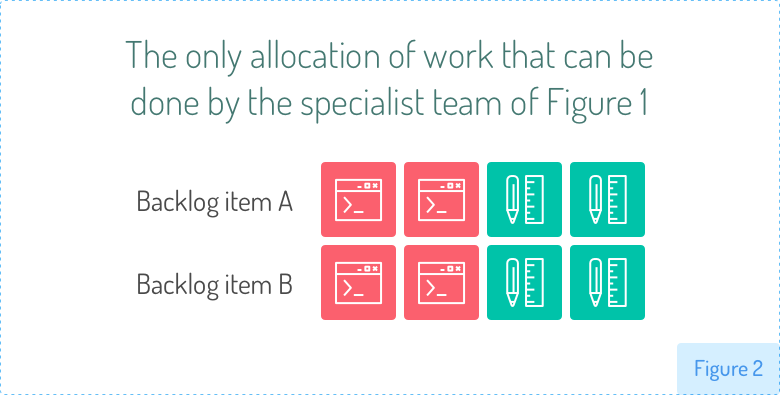
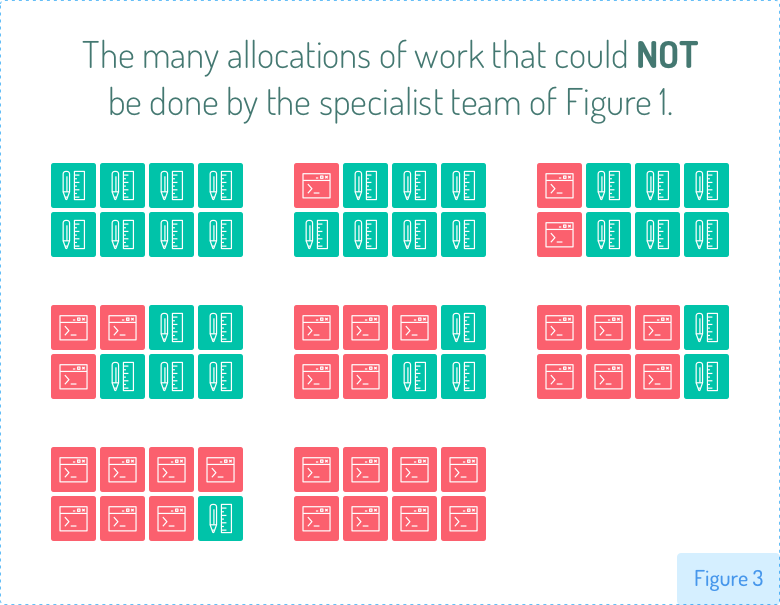
Images via Mike Cohn
Crossfunctional marketing teams have more latitude in how they execute work, and they tend to be faster than specialized teams, as Mike illustrates: 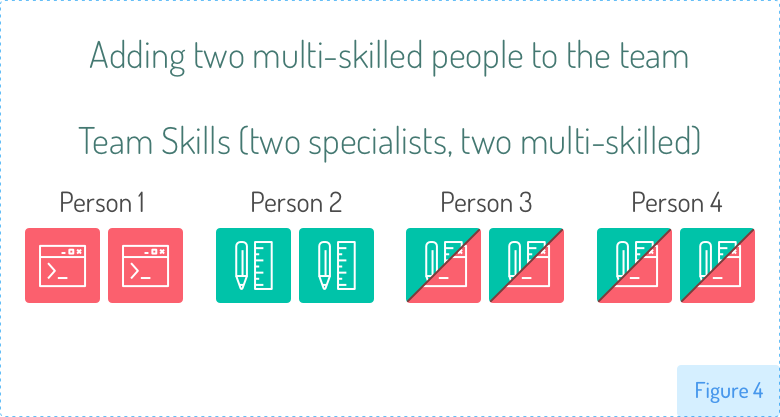
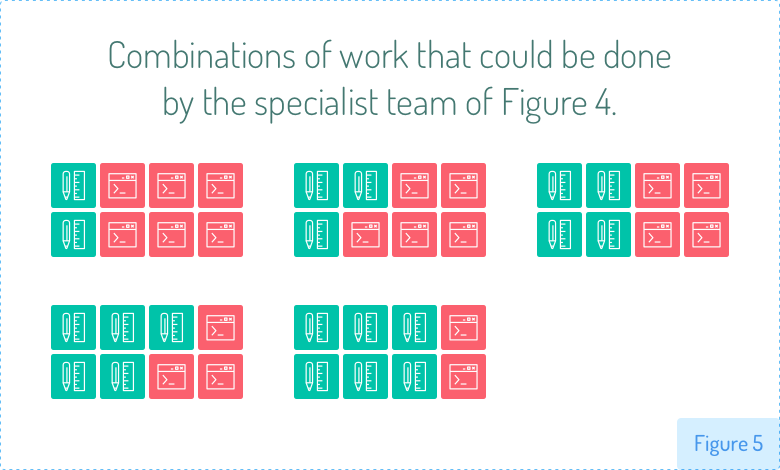
Images via Mike Cohn
So they’re usually a good ideal to aim for, but in the real world of Agile marketing, there are times when it just can’t happen. Let’s get back to our three scenarios to see why.
This scenario happens when creative services (or whatever you call your internal agency) is under-resourced compared to the number of crossfunctional marketing teams that would be created. I've seen this in fields like HLS marketing where the other options on this list aren't as easy to implement.
Here’s how it works: in a team of 30 marketers (not including creative), we’d be building 3-5 cross functional teams.
To be truly crossfunctional, each of those teams needs a copywriter, a designer, and a creative director to review their work. (We can talk about how to reduce the bottleneck factor for folks like CDs another time.)
Most of the time creative services doesn’t have 3-5 writers, designers, and creative directors (that would give them 33-50% of the headcount of the larger marketing department...not a typical ratio).
To solve for this, we let the 30-person subset go ahead and spin up their own crossfunctional marketing teams.
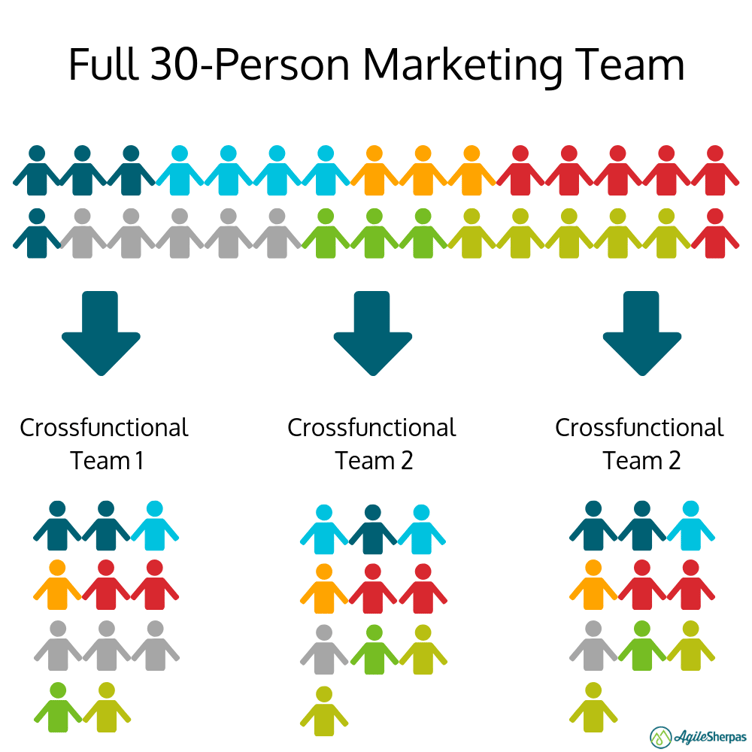
30-person marketing team forming 3 crossfunctional teams
Chances are we’ll still be light on 1-2 specialities, but we can deal with that in the short term and either cross-train or hire to supplement.
Meanwhile, creative services stays intact as their own Agile team. 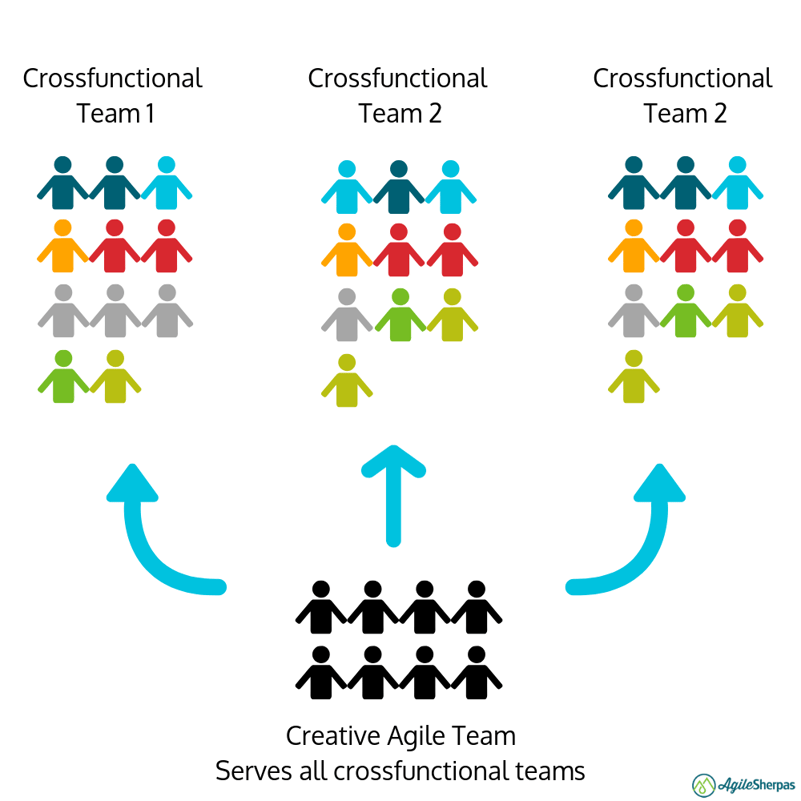
Crossfunctional marketing teams plus a creative services group
They have a backlog of work, a Marketing Owner/Agile Lead, and their own distinct focus on how to deliver value for a customer. Crossfunctional Agile marketing teams make requests of them, which they then prioritize and deliver.
It’s a little outside the scope of this particular discussion, but it’s worth mentioning that most creative groups in this situation find a Kanban-style approach to be the most useful.
Timeboxed sprints feel arbitrary and constraining, whereas continuous flow feels more in line with how they already work.
This is totally fine, even if the rest of marketing ends up preferring Scrum (or another timebox-centric hybrid). Each team will optimize their process independently, so if creative wants to look more Kanban-like while digital delivery seems more Scrum-ish, that’s completely OK.
Honesty time: a couple of years ago I would never have answered “no” to the question of whether Agile marketing teams should be cross functional. I once firmly believed this was the best/only way to achieve meaningful levels of agility.
Since then, however, I’ve had many eye-opening experiences and heard some real pain coming from marketing teams trying to make crossfunctional marketing a reality in the face of serious staffing limitations.
The truth is, in some instances crossfunctional marketing teams hurt more than they help.
Typically this is true early in an Agile transformation. For instance, I worked with a team of about 20 recently whose CMO was fully committed to agility and crossfunctionality.
We worked together to turn their existing org chart into two crossfunctional marketing teams, and then presented our first iteration to the larger group at an offsite training.
The response was swift and overwhelmingly negative.
What I and the CMO interpreted as “crossfunctional Agile teams that will let us get more done in less time and with fewer handoffs” translated as “I’ve lost my boss and favorite teammate and am being asked to work with strangers in a way I don’t fully understand.”
After listening to and documenting their concerns, we decided to create a crossfunctional pilot to test the concept before moving forward.
Part of the problem was that there were specialized roles, e.g. marketing automation, that had only one person currently capable of doing them.
3 super specialized roles inside a larger marketing organization
The other part was groups that were comfortable working with each other, e.g. digital marketing, felt their close-knit team had just been blown up for no good reason.
In hindsight, there was a lot more socialization that needed to be done in advance of the announcement to help smooth the transition.
But more fundamentally, our commitment to crossfunctionality may have been misguided given the makeup of the existing teams. They could have adopted Agile practices and experienced early wins without blowing up their whole org chart (which is what ultimately ended up happening).
If this sounds familiar, I have good news: you can retain your existing functional silos while still getting benefit from Agile frameworks.
Let’s say you’re currently setup something like this: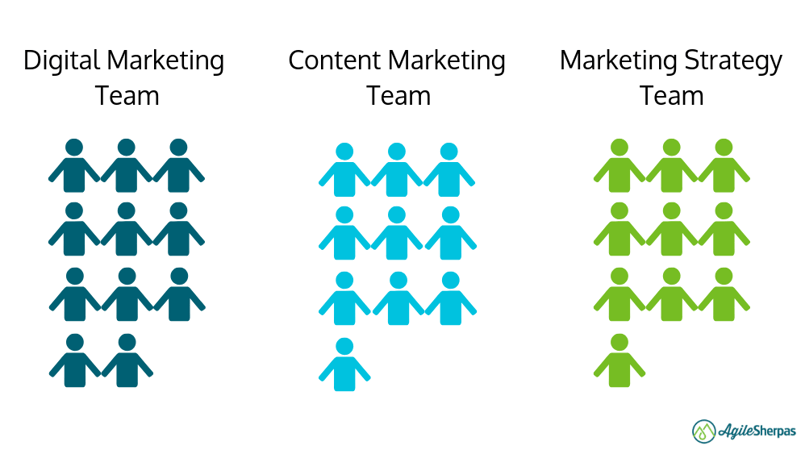
You could build a backlog for each of these groups, visualize their work, and start having daily standups for each of them. There would be exponential increases in output, morale, and collaboration, and Agile marketing would start to seem like the greatest thing since sliced bread.
Then, once they had reaped all the available benefits from using Agile marketing in their existing silos, it might be time to revisit the cross functional discussion. Of course, additional resources are going to be required at that point, which brings us to the final option.
The best way to figure out if cross functional teams are the right way to go for you is the same way we figure most things out in an Agile environment: we test them.
So ideally, if you’re unsure about whether crossfunctionality is the best approach, you try it out.
Reminder: you need to be able to effectively and accurately track the results of your experiment if you want it to be valid. So if you’re hoping for faster campaign delivery, make sure someone is monitoring that.
If higher SQLs are your goal, be sure the tracking pre- and post-Agile is in place before you start the pilot.
And finally, clearly document what both success and failure look like for your crossfunctional pilot.
Did we succeed if our campaigns can go out in 2 weeks instead of 2 months?
Did we fail if it still takes 4-5 weeks?
If SQLs only went up 20% is that a fail, or a win?
By clearly defining the parameters of your experiment you’ll be better positioned to decide if crossfunctionality is going to be worth the work.
Most marketing groups will need to hire to make true crossfunctionality a reality, so you need a clear business case available to make the argument for spending that money.
If you’ve struggled with similar questions on your Agile marketing team, let us know how you tackled them in the comments!
Did you end up cross functional, or did silos win the day?

Andrea Fryrear is a co-founder of AgileSherpas and oversees training, coaching, and consulting efforts for enterprise Agile marketing transformations.
Subscribe to our blog to get insights sent directly to your inbox.
Subscribe to our blog to get insights sent directly to your inbox.